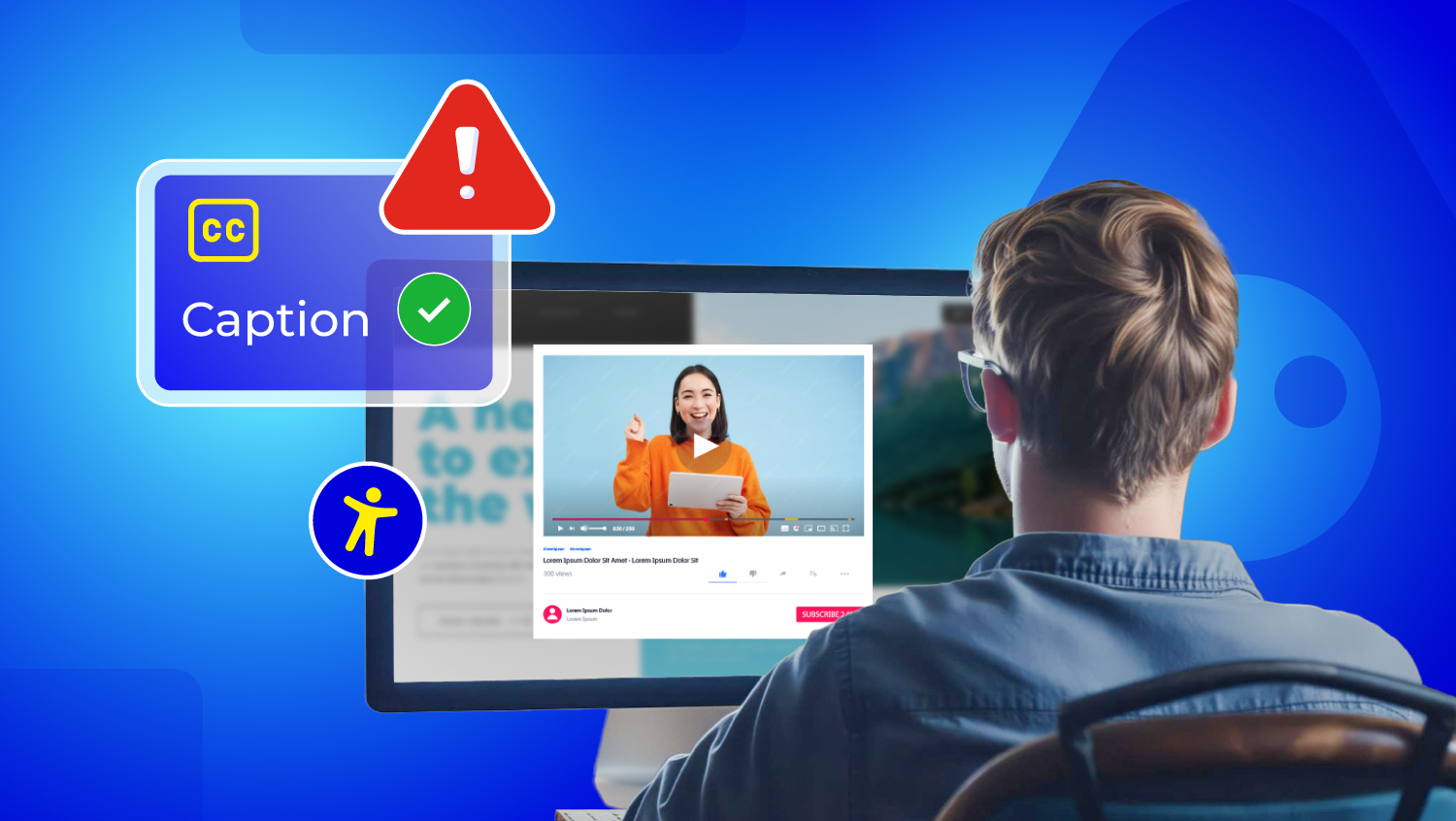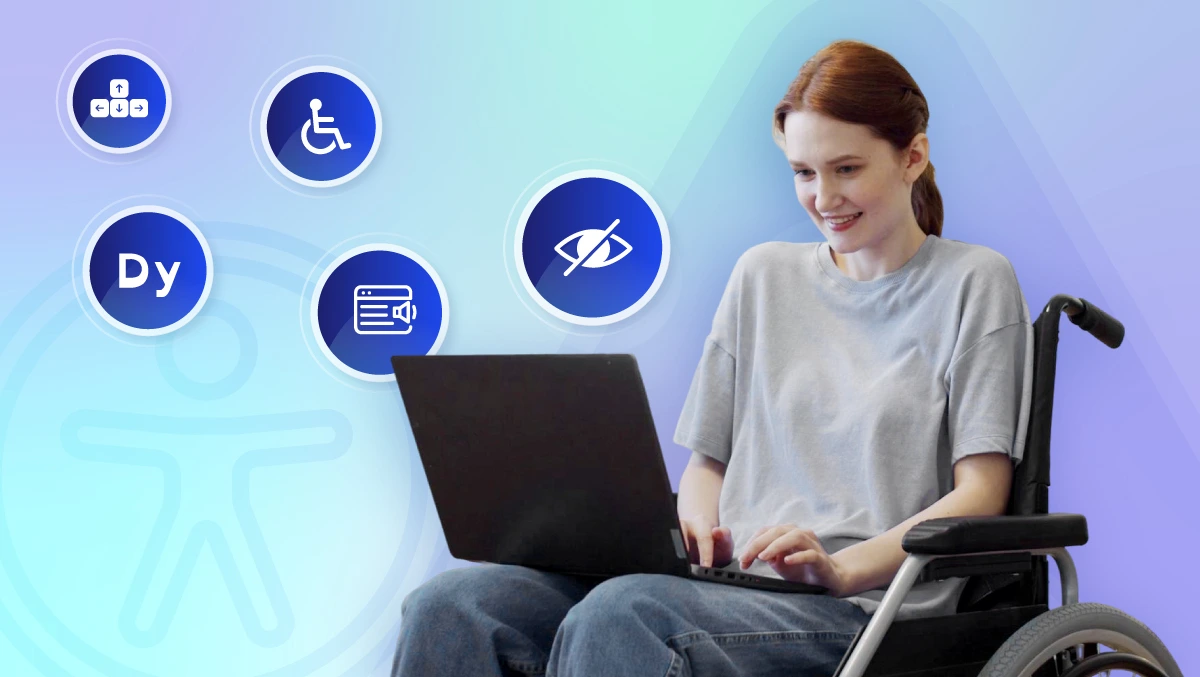AI and Accessibility: Transforming Digital Experiences for All Users
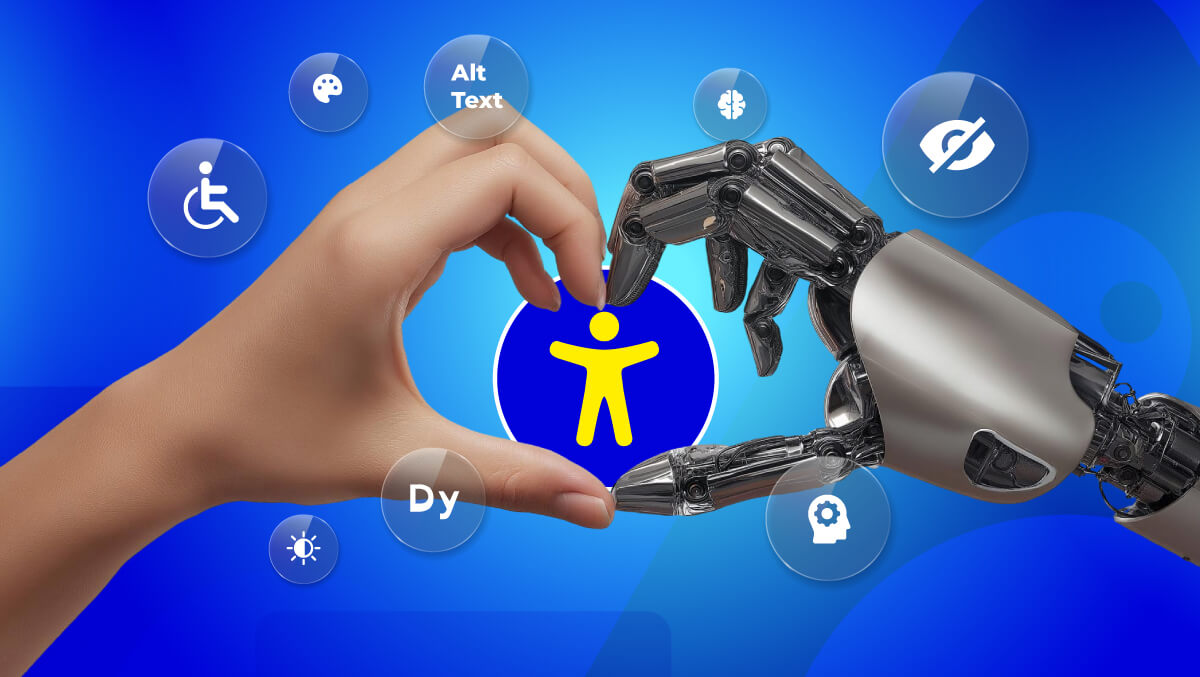
AI is no longer the future, it’s the present. From marketing to customer support, it’s reshaping how we work and live. In fact, 91% of businesses already invest in AI to boost efficiency and innovation.
Beyond productivity, AI is a game-changer for digital accessibility. Tools like automated captions, real-time translation, and content summarization help people with disabilities access online information with ease.
This post explores how AI is breaking accessibility barriers, the tools making it possible, and how to use them wisely, ensuring technology becomes a bridge, not a barrier.
Emerging AI Tools for Accessibility
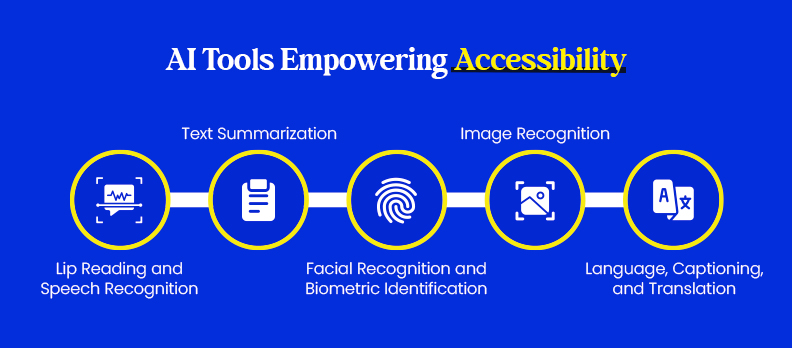
AI is breaking barriers for people with disabilities, making digital interactions more inclusive and independent.
- Language, Captioning & Translation:
Tools like Verbit, Otter.ai, and Microsoft Translator turn speech into real-time captions and translations, while Google Translate (GNMT) reduces translation errors by up to 85%.
- Image Recognition:
Google Vision API and Seeing AI describe objects, text, and scenes, helping users with low vision understand visual content.
- Facial & Biometric Access:
Apple Face ID, Windows Hello, and AI-based CAPTCHA alternatives allow easy, secure logins without typing.
- Text Summarization:
Salesforce NLP, SMMRY, and GPT models simplify long texts into readable summaries for better comprehension.
- Lip Reading & Speech Recognition:
DeepMind Lip Reading AI and Google’s Project Euphonia convert speech and lip movements into text, improving communication access.
AI empowers users to navigate, understand, and connect with technology more easily, creating a truly inclusive digital world
Breaking Barriers: AI as an Assistive Technology
Making Communication Accessible
AI simplifies communication for everyone, especially people with disabilities.
- Real-time captions: Tools like Verbit and Otter.ai instantly turn speech into text for meetings, webinars, and videos.
- Translations: Microsoft Translator and Google Translate break language barriers.
- Alternative communication: AI helps users with speech or mobility limits compose emails and messages quickly and clearly.
Empowering Visual Accessibility
AI helps visually impaired users access visual content easily.
- Image recognition: Google Vision API and Seeing AI describe objects, text, and scenes.
- Facial ID & biometrics: Apple Face ID and Windows Hello simplify device access without manual input.
Simplifying Complex Information
AI makes large volumes of data easier to understand.
- Text summarization: Tools like Salesforce NLP and GPT summarizers condense long documents into readable summaries.
- Structured content: AI-generated outlines make information more accessible for people with reading or cognitive challenges.
Supporting Speech and Hearing
AI enhances communication for those with hearing or speech impairments.
- Lip reading AI: DeepMind’s tech converts spoken words into text in real time.
- Speech recognition: Google’s Project Euphonia adapts to atypical speech so users can communicate independently.
Enhancing Creativity and Workflow
AI boosts creativity and productivity.
- Conversational AI: Tools like ChatGPT and Jasper speed up writing, research, and idea generation.
- Content support: AI assists in brainstorming, drafting, and editing to improve workflow.
Seamless Integration
AI strengthens traditional assistive tools.
- Screen readers: Smarter navigation and reading experiences.
- Captioning & transcription: AI-driven captions enhance accessibility for more users.
Conversational and Content AI: Making Communication Effortless
AI-driven conversational and content tools are transforming how we communicate, making digital spaces more inclusive for people with disabilities. These tools enhance independence, improve access, and create more equal opportunities for everyone.
ChatGPT and Conversational Agents
- Support for Limited Speech or Mobility: Conversational AI helps users draft emails, messages, and responses quickly, even with physical or cognitive limitations.
- Efficiency and Clarity: AI reduces the effort needed to express thoughts clearly and ensures the right tone in every conversation.
- Confidence and Accuracy: By minimizing communication barriers, users can engage more easily in both personal and professional interactions.
Content Generation Tools
- Creative Assistance: Tools like Jasper and AI Dungeon support users with idea generation, writing, and research.
- High-Quality Outputs: AI enables users to produce professional-level content, regardless of physical or mental challenges.
- Inclusive Opportunities: Accessible content creation allows people with disabilities to participate more fully in creative and professional fields.
Screen Reader Integration
- Enhanced Assistive Technology: AI complements screen readers, improving navigation and comprehension for visually impaired users.
- Seamless Interaction: Users can move easily through websites and documents while maintaining full digital access.
Inclusive Experience: AI-powered tools make online journeys smoother and more accessible for a diverse range of users.
The Hidden Risks: When AI Fails Accessibility
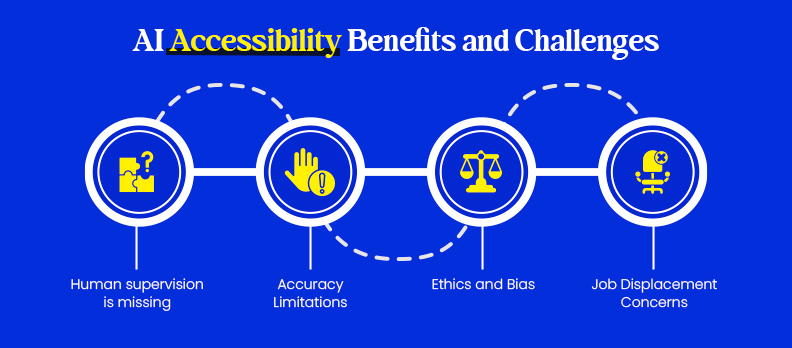
AI offers powerful ways to make digital spaces more inclusive, but it’s not flawless. Recognizing its limits ensures responsible and fair use.
Lack of Human Oversight
- False Compliance: Automated WCAG testers can show sites as “accessible” even when they’re not.
- Misleading Alt Text: AI often mislabels images, confusing visually impaired users — human review remains essential.
Accuracy Limitations
- Caption and Translation Errors: AI subtitles and translations can contain mistakes.
- Incomplete Understanding: Misinterpretations in speech-to-text or summaries can cause confusion for users who rely solely on AI.
Ethics and Bias
- Hidden Bias: Since AI learns from human data, it can inherit societal biases.
- Risk of Exclusion: Poorly monitored systems may unintentionally exclude certain groups, reducing fairness and accessibility.
Job Displacement
- Automation Impact: AI could affect roles in support or accessibility-related industries.
AI as Support, Not Replacement: The goal should be to assist humans, not replace them, enhancing productivity while protecting jobs.
Mitigation Strategies: Using AI Responsibly for Accessibility
AI can greatly improve accessibility — but its real potential shines only when used wisely and ethically. Here are key ways to ensure AI remains a tool for inclusion, not exclusion:
- Human Oversight: Always verify AI-generated results for accuracy and relevance. Tools like Access AI Audit can detect accessibility issues, but human reviewers catch the nuances machines may miss.
- Inclusive Training Data: Train AI on diverse datasets to reduce bias and ensure neutral, inclusive solutions. Including accessibility principles in AI’s learning process helps it better serve users with disabilities.
- Privacy and Data Protection: Sensitive information must be handled carefully before being shared with AI systems. Platforms like Access Monitor help maintain data privacy and compliance with protection laws.
- Ethical Deployment: AI should support, not replace, human workers. Assistive chatbots like Access Assistant enhance communication and productivity for users with disabilities while empowering employees to provide better support.
- Continuous Testing: Regularly test and update systems to maintain accessibility standards. A balance of AI-driven tools and active human monitoring ensures a truly safe and inclusive digital environment.
AI-Powered User Experience: Enhancing Navigation and Interaction
Artificial intelligence reshapes how users interact with digital platforms, making navigation easier and experiences more inclusive. Here’s how AI enhances usability and accessibility:
User Navigation Testing
AI can mimic real user behavior to identify accessibility barriers such as keyboard traps, focus issues, or confusing layouts. By simulating users with disabilities, AI helps designers detect and fix problems early—creating smoother, frustration-free navigation for everyone.
Alternative Output Formats
Different users need different ways to consume content. AI enables diverse formats such as audio narration, text summaries, visual highlights, and interactive transcripts. These options improve comprehension and engagement for users with vision, hearing, or cognitive challenges.
Continuous Accessibility Compliance
Maintaining accessibility compliance can be tough as websites evolve. AI continuously checks adherence to standards like WCAG, flagging issues such as missing alt text, incorrect heading structures, or poor color contrast.
By combining smart navigation testing, adaptable content formats, and real-time compliance monitoring, AI ensures digital experiences that are not only more accessible but also more enjoyable. Businesses that embrace AI this way foster usability, engagement, and true digital inclusion.
Conclusion - AI as a Partner for Inclusion
AI can transform accessibility, empowering independence and inclusion. But challenges like bias, accuracy issues, and limited oversight remain.
With responsible design, human review, and ethical use, AI can truly enhance digital access for all.
Curious about your site’s accessibility? Try a free accessibility audit to spot improvements and ensure it works for every user.
FAQs:
No. AI can help automate many checks and fixes (like generating alt text or detecting low contrast), but it can’t catch every problem. Human review is always needed to judge context, usability, and correct errors.
AI can continuously scan your site for new accessibility issues, flag regressions (bugs introduced in updates), and suggest fixes. This makes it easier to keep accessibility from slipping over time.
Absolutely. AI tools are imperfect. Real users will surface issues, edge cases, misunderstandings, or unanticipated behaviors, that no automated test can find.
Look for tools that:
- Explain their methods and limitations
- Allow manual override or editing
- Work well with your development workflow
- Respect privacy (don’t require unnecessary data sharing)
Check it manually. Make sure it clearly describes the image and is meaningful to someone who can’t see it. Avoid vague or generic lines, think of the AI text as a rough draft you can improve.


